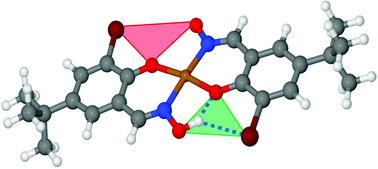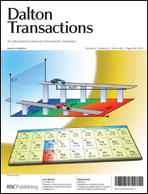Collision induced dissociation (CID) to probe the outer sphere coordination chemistry of bis-salicylaldoximate complexes‡†
Abstract
Ligand–ligand interactions in the outer coordination sphere make an important contribution to the effects of 3-substituents on the stabilities of anionic

- This article is part of the themed collection: Collection of articles dedicated to Professor David W. H. Rankin on the occasion of his retirement

 Please wait while we load your content...
Please wait while we load your content...